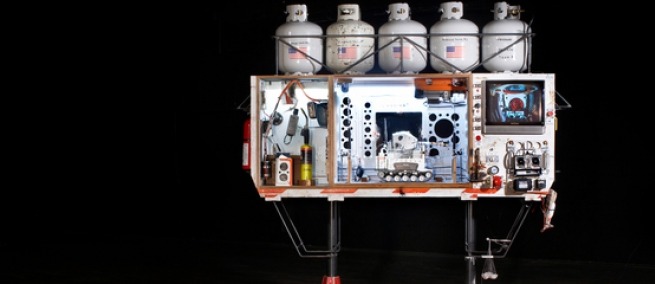
Tom Sachs is an internationally acclaimed sculptor with two upcoming shows, one at the Noguchi Museum and one at the Brooklyn Museum. Sachs's show at the Noguchi Museum is the Museum's first major solo show to be devoted to an artist other than Noguchi. He has a sculpture, “Godfather Viewing Station,” in the current show “Walkers: Hollywood Afterlives in Art and Artifact” at the Museum of the Moving Image up now through April 10. Sachs has a new film by director Van Niestat–TOM SACHS PRESENTS: A SPACE PROGRAM–premiering at the Metrograph theatre that is the first film to have a full theatrical run there. A SPACE PROGRAM is based off an installation Sachs did at the Park Avenue Armory in 2012 where he simulated going to Mars. His team of twelve assistants who had to go through a regimen called “Space Camp” which involved feats of physical fitness to qualify, participated in the performance.
A SPACE PROGRAM is narrated by the studio’s boot camp trainer Pat Manocchia. Science & Film visited Sachs at his studio on Centre Street in New York, three floors behind a bodega he also owns and brings in friends to curate. We interviewed Sachs and Niestat about their recent film.

S&F: To make A SPACE PROGRAM you worked with artists but you trained like scientists, in a way. What do you see as the similarities between the scientific and the artistic process?
TM: I think scientists and artists are a lot alike in that they both have these ideas based on a gut feeling and then they have to go out and prove it, otherwise people will not take them seriously. Through this space program we have become friends with a lot of scientists. In particular, there is Dr. Kevin Hand, who is the guy in the movie who says: “If I don’t find life on another planet in the next 25 years I am going back to organized religion.” Dr. Hand wrote that line. He is a leading astrobiologist and planetary scientist at the Jet Propulsion Lab (JPL). When we find life on Europa (the icy moon of Jupiter, they’re sending ships out there, it will probably happen in the next 15 years), he’s probably being groomed for the guy who is going to be associated with the discovery. He is going to be the lead scientist on that probably. He is America’s leading guy. He is from Vermont. His parents worked at Bromley Mountain. His mom was a nurse and his dad the chief chairlift operator, so he was an expert skier. He went to Dartmouth and then Stanford for his PhD. He talks and acts like an artist and behaves like an artist. He invented this thing called “Europa-in-a-Can” which is a stainless steel vessel that is bombarded with radioactivity and the environmental circumstances, and it’s filled with liquid nitrogen, it’s freezing cold, and it has all the circumstances that Europa has.
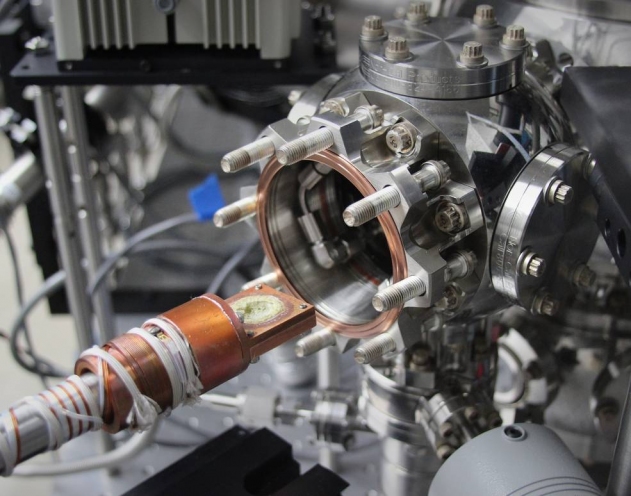
Kevin Hand was one of the guys that came here and said, you guys should stop looking at the moon. You should go to Mars and we’ll help you re-craft your lunar space program so that it works on Mars. We had a ball of duct tape that represented the moon, and one of the things that Dr. Hand and his team did said was, see that red duct tape, you should just cover the gray duct tape with red and now it will be Mars. It was amazing because we had these real NASA scientists speaking to us so that we could understand. But I also think that they employ all these tactics that we employ, like this concept of baby fat: if you engineer something you have to engineer a little leeway because you don’t know every possible thing, or you predict it then you have to go realize it, or all the knowns and unknowns or all the unknown unknowns or all those things that Errol Morris talks about. Those are things artists, politicians, and scientists all have to execute.
Van Niestat: There was this device that did not make it into the movie, a mortar and a mortar launcher. It was gunpowder, and you had to get a teaspoon and measure it out with one of those coke scales. It would shoot this projectile thing. We brought it to the Arroyo Seco in Pasadena to use it with the actual rocket scientists–Adam Steltzner, Tommaso Rivellini, and Gregg Vane–who invented, built, and controlled Entry, Descent, and Landing (EDL) with rockets, the newest thing on Mars right now. These guys are there and Tom has this homemade thing and they are trying to get this projectile to land in this specific spot. The artists, we would shoot it, and then we would fuck with it and move it around. The scientists, they just would do calculations and then move this little protractor on the side to get the angle right and then could say oh, you need five more grains of black powder, and it fucking worked.
TS: They actually were able to use science and make our thing more accurate.
VN: Because artists, if we were good at that stuff, if we could do the calculations, then we would do that stuff. I would, if I wanted to be an engineer and make airplanes, but too hard. I’m really good at math, I’m just bad at numbers. Because a film is all just images. Our film has 1,300 shots in it, and 48 tracks of audio. You get in there and that’s just the way my brain works. There are 10,000 steps to making a movie. Buddhists have the 10,000 things. You move one thing and it all blows up. You have to be able to extrapolate and interpolate all those moves, which to me is mathematics. 24 frames for second, I can do that math. Numbers, I leave that up to Gregg Vane.
S&F: You were really out there working with scientists. I saw in the film’s credits the list of thank yous to the Jet Propulsion Laboratory and NASA. How did you get connected with those people?
TS: Gregg Vane knocked on the door. It was 2010 and we had just finished going to the moon in 2007, and we were getting ready and wanted to do another mission.
Obama had just been elected and he was in office and was starting to make changes. Bush was planning on going back to the moon. One of the things I have learned about the space program is that there are all these pitfalls; you have to get your mission done in a four or eight year cycle because the next regime is going to cancel. So Gregg Vane and the EDL team (Adam Steltzner, Tommaso Rivellini, and Kevin Hand) were psyched that Obama had cancelled the lunar mission and was going to Mars because it’s a more interesting problem. Gregg Vane’s job is the strategic planner in solar system exploration at JPL—for real. He is an explorer and he is the guy who talks to Congress. I designed the EDL mission pack; the real one. I believe in civic responsibility. They had it sewn onto their blue polo shirts.
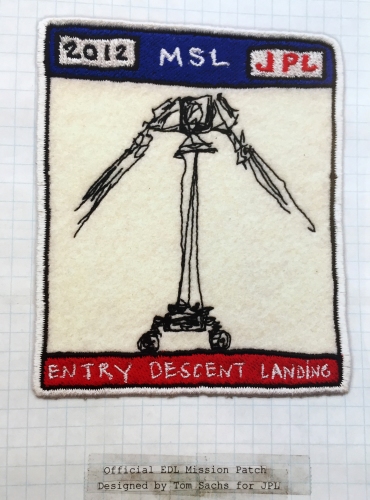
VN: There were some things that didn’t make it into the movie because it was just so vast.
S&F: How many hours of footage did you have?
VN: 100,000 shots or something.
S&F: You have made a bunch of short films haven’t you?
VN: We’re doing a tea movie.
TS: The set is so good.
VN: The set is the Noguchi Museum.
TS: Daikon Heart, the curator at the Noguchi Museum, is a dream.
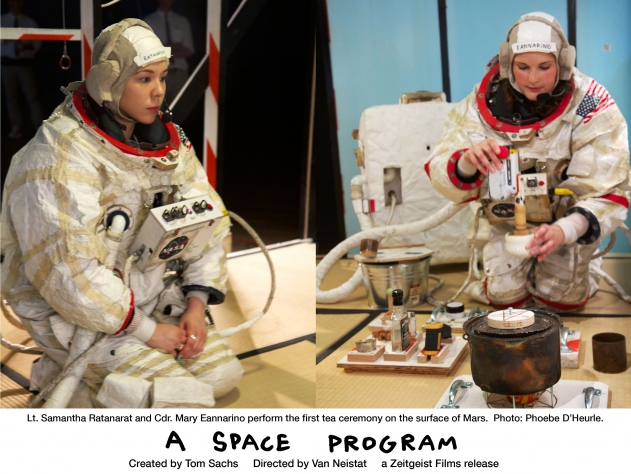
Anyway, there is a new mission that they just launched last night to go to Mars called Schiaparelli. Entry, Descent, with parachutes, and then they have jets, hydrazine fuelled rockets, that bring it down. Our EDL also did entry through the heat shield, parachutes, and then it landed and then had the sky crane that lowered down cables. Entry was this little capsule with a torch on it. Descent with a parachute and a camera there and fire goes out these tank, all from the point of view from the camera so to scale it matches. The landing is this little rover that goes down on cables and drives around.
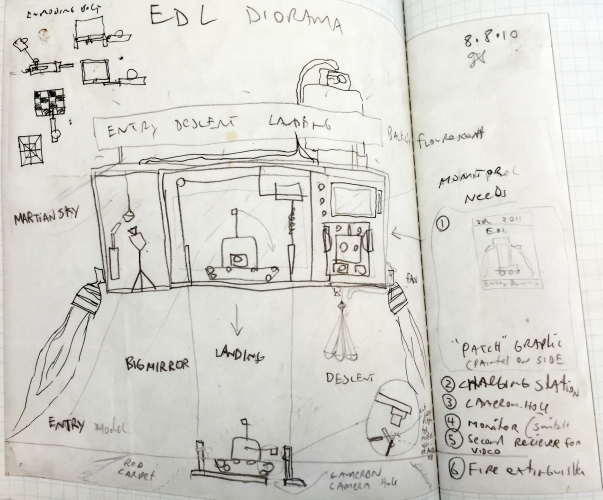
Then we engineered a tank that could do all this other stuff like shoot fire and water and acid and it even had a laser. One of the things that Curiosity did was laser immolation so it shoots a piece of rock and studies the smoke with a spectrograph, and you can tell what’s going on from far away pretty well. Gregg Vane and all those guys are masters at spectroscopy. So we did our own bootleg spectroscopy. I didn’t even know that spectroscopy existed before meeting those guys. This was one of the many things we did with that group.
S&F: I was talking to Douglas Trumbull today and he mentioned his love for miniatures. BLADE RUNNER was shot with models. He prefers that to computer graphics because of how models stand up over time on film. It’s interesting you’re also using that.
TS: That is really one of the cores of the movie where you see the effect and then we show you how it works.
S&F: Have you had scientists watch the film?
VN: All those JPL guys.
TS: Other scientists have watched it. A lot of people talk about the good old days of the Apollo program and talk about their father or grandfather who was involved. It meant so much. I am sympathetic because it is the greatest art project of all time; it didn’t really mean anything, but we harnessed the energy of a war-scale operation for art. Art and science are so linked.
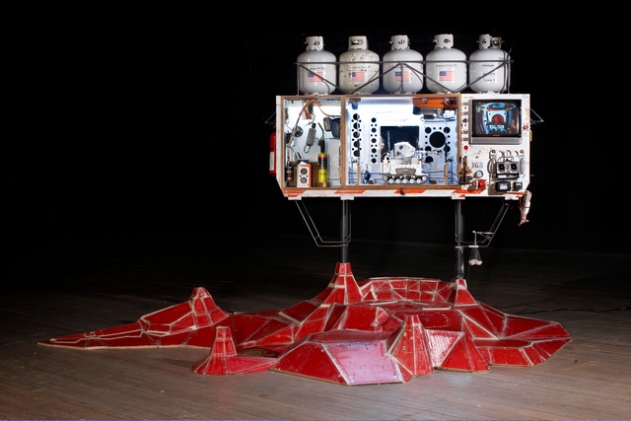
S&F: Did either of you study science in school?
VN: You had to. I took Rocks for Jocks and then I took Biology for Non-Majors. I went to William & Mary. I went to every single tutorial session. The professor, she said, look, you’re never going to get this. If you give me your word that you will not go into medicine I will pass you.
TS: How cool is this teacher?
VN: She was the best. You know what Mark Twain says: 80% of success is showing up. So I went to every class and every study session.
TS: That’s what kept me out of medicine, because everyone in my family is in medicine. I was supposed to be, not a doctor, but a surgeon because they knew that I had special powers. But that valence shit fucked me up so bad and I remember getting into huge fights with the dean at my high school. I finally got to apologize last year when they honored me; I was the honored alumnus at my high school in Connecticut. I said I wish I had studied that. Maybe now I could do it.
S&F: Did you study art in school?
TS: I went to a liberal arts college and I got so into art. I was forbidden to go to art school. But I blew off all my other classes and hung out in the library looking at books and I just passed classes. Just. I’m so proud of that.
S&F: How do you think the scientific community will respond to the film versus the artistic community or the film-going community?
TS: I think everyone is going to hate it for different reasons. I think the art people are going to hate it because it is not weird enough. I think the movie people are going to hate it because it’s too weird. I think the science people are going to hate it because it’s not scientific enough. The regular people are going to hate it because it’s too scientific. It is like somewhere in between all these things. I don’t mean to be pessimistic, but I think it is a way of understanding our particular view.
VN: It’s like a Toyota Camry. Not specialized enough in any single area.
TS: I love this movie. I am very proud of it. I think it has got problems because it is homemade, but I think those problems are the things that make it great. It’s transparent in the way it’s made and that’s important. And it’s also true to all the movies that we have made that are perfect. TEN BULLETS & COLOR and LOVE LETTER TO PLYWOOD are perfect movies, but they were made for the internet, and they’re the highest quality made for internet movies ever to exist.
VN: I like that.
TS: Without a doubt. There are a lot of people who make those movies, but none of them are as good as Van. These are carefully crafted over a long period of time. A SPACE PROGRAM suffered because we were committed to making a feature length film which is a totally obsolete length of time. Movies were made that long so that people could justify spending ten or fifteen dollars. Those theatres are gone and movies now can be as long or short as they need to be, which is great. We made ours 72 minutes and Van thinks it should be 50. I think we should consider that. I have no problem with making it that.
VN: In the beginning Tom wanted all the subtext of the work be a part of it, and there were all these bits of narration Tom wanted to put in there about the process. I came to the conclusion in editing it that the thing itself is so sophisticated that to simply explain it and use a narrative, it is enough to just to explain what happened. Just to be literal about it was enough. All the other stuff could be implicit rather than explicit.
S&F: Some of the work from the A SPACE PROGRAM will be in the shows at the Noguchi Museum and Brooklyn Museum which you have coming up.
TS: Part two of the SPACE PROGRAM movie is the show at the Noguchi Museum because it is the extension of that scene in the film—the tea ceremony scene. It is the best scene in the movie I think.
A SPACE PROGRAM plays at The Metrograph March 18-24 before travelling to cinemas in Maine, California, Texas, Wisconsin, and more.